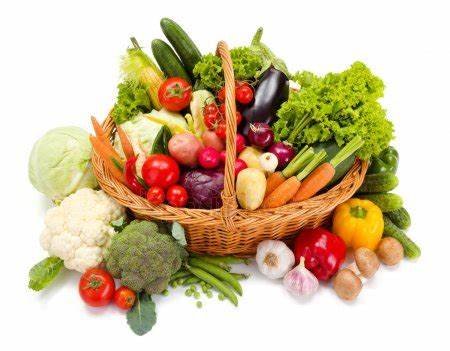Classification of Vegetables according to their content.
Everyone knows that vegetables are good for health. These products have a positive effect on the human body due to the presence in them of valuable substances that people need. Useful items are part of absolutely all vegetables. Here there is only a set of these elements in each of them is different.
Vegetables that contain proteins.
The body needs protein to maintain the structures and growth of the cells of all organs. What vegetables do they contain? Its supplier is meat, dairy products, eggs, fish. However, protein can be obtained not only from animal foods.
No less valuable to the human body is the protein in vegetables. Vegetables rich in this substance do not contain fat, so when consumed, a person receives fewer calories.
Processed vegetable protein is easier than animal protein. In addition, beneficial carbohydrates, with fiber, also enter the body with it. What vegetables contain protein? You will be surprised, but you can find
Protein leaders:
Green peas. In addition to protein, it also contains iron, vitamin A and water soluble fiber. Having eaten half a cup of this vegetable, you get 3.5 g. Chipmunk
Broccoli. This product is 33% protein. Such a vegetable will help replenish the reserves of this substance, and even with regular use it will protect the body from cancer.
Brussels sprouts. In one hundred grams of this product there are approximately 4.8 grams. Squirrel This vegetable is a dietary product.
Spinach In addition to protein, it contains many vitamins. This vegetable is considered a source of iron, improves digestion and eliminates harmful substances from the body.
Corn Not only tasty, but also a nutritious product. Having eaten half a glass of your grains, your body will receive 2 grams of protein.
Asparagus. It is rich not only in proteins, but also in folic acid, saponins and carotenoids.
Mushrooms. Fungal proteins are very similar to those found in meat.
Vegetables that contain fiber.
Fiber is the fiber present in plants. For the human body, it is no less important than minerals and vitamins. This substance plays an important role in digestion processes, helps to eliminate waste and harmful substances.
Fruits and vegetables that contain fiber help reduce weight, saturate well, prevent the development of many gastrointestinal diseases, cardiovascular diseases and reduce the likelihood of kidney stone and gallbladder formation.
Regular consumption of these products will help prolong youth, increase immunity and reduce blood cholesterol.
The fiber in vegetables is found in different amounts. Most of it is in sweet corn, avocado, spinach, asparagus, cabbage (especially in Brussels), pumpkin, carrots, broccoli, potato peel, green beans, asparagus, peas, fresh onions, boiled beets.
In small quantities, it is found in sweet pepper, celery, sweet potato, zucchini, tomatoes.
Carbohydrates
For humans, carbohydrates are fuel. These complex organic compounds are involved in many processes that occur in the body. However, not all are equally useful.
All carbohydrates are generally divided into simple and complex. Both and others are necessary for an organism. But only in the diet, complex carbohydrates in quantity should prevail significantly over simple ones.
The former contain many foods, including vegetables. Complex carbohydrates are part of almost all vegetables.
The most useful include the following: all cabbage varieties; green beans; leeks and onions; pepper; zucchini, tomatoes, spinach, leaf lettuce; broccoli; carrots; Asparagus, radish, cucumbers.
Naturally, vegetables can have different amounts of carbohydrates. In addition, you can change when processing products. The least amount of carbohydrates (up to 4.9 grams) in cucumbers, radishes, green onions, tomatoes and lettuce. A little more (up to 10 grams) in zucchini, cabbage, carrots, squash. A moderate amount of carbohydrates (up to 20 grams) is found in beets and potatoes.
Starchy vegetables.
After entering the body, the starch breaks down and becomes glucose molecules. This substance is used as a source of energy. Starch in vegetables, such as starch in vegetables, is present in small amounts. It is deposited mainly in grains and tubers.
Its high content in potatoes. A significant amount has sugar corn, green bananas, green peas, a little less than this substance in the rest of the legumes.
Other starchy vegetables include root crops such as Jerusalem artichoke, beets, radishes and sweet potatoes. The roots of kohlrabi and squash, parsley and celery contain it in small amounts.

Thanks for sharing this post with us today Processed vegetable protein is easier than animal protein. In addition, beneficial carbohydrates, with fiber, also enter the body with it.
Resteem
Hello! I find your post valuable for the wafrica community! Thanks for the great post! We encourage and support quality contents and projects from the West African region.
Do you have a suggestion, concern or want to appear as a guest author on WAfrica, join our discord server and discuss with a member of our curation team.
Don't forget to join us every Sunday by 20:30GMT for our Sunday WAFRO party on our discord channel. Thank you.
Your post has been featured on @wafrica
Courtesy of @nmalove